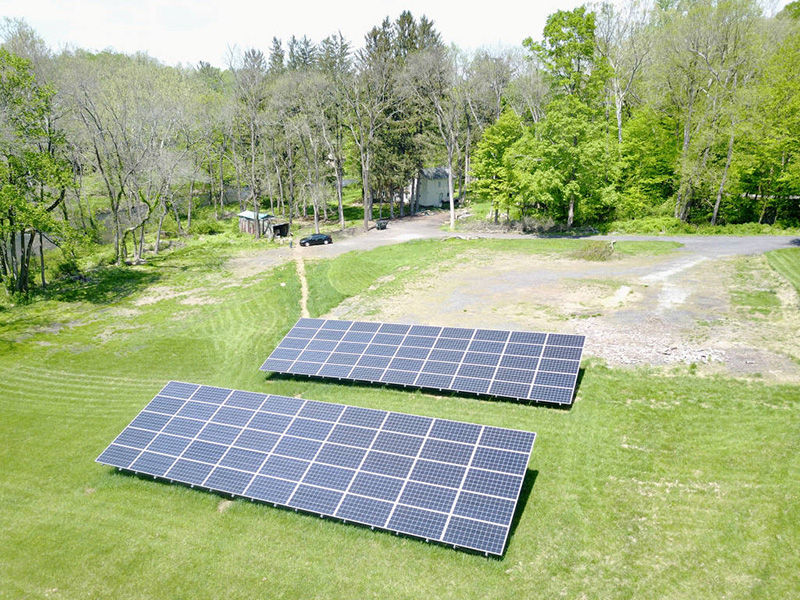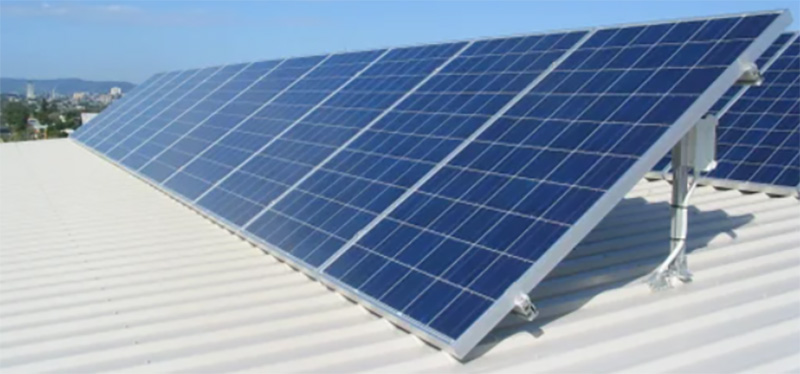Description
Monocrystalline solar panels tend to have higher initial costs due to their superior efficiency and production methods. However, polycrystalline panels, while slightly less efficient, are generally more affordable upfront. Over time, both types offer significant energy savings, but the choice often hinges on budget, desired efficiency, and space availability.

Basic Definitions
Solar panels, often viewed as the powerhouse of renewable energy, primarily come in two types when considering the crystalline structure of the silicon used. These are monocrystalline and polycrystalline. Let's delve into the details of both to understand them better.
What is Monocrystalline?
Monocrystalline solar panels are made from a single crystal structure. They are easily recognizable due to their even coloring and uniform appearance. This single-crystal structure allows electrons that generate a flow of electricity to move more freely, ensuring better efficiency.
- Appearance: Typically black in color due to the way light interacts with the pure silicon.
- Efficiency: Monocrystalline panels generally have a higher efficiency rate, often ranging between 15-20%.
- Lifespan: These panels are known to have a longer lifespan, with many offering 25+ years of service.
- Cost: Generally, they tend to be more expensive than their polycrystalline counterparts due to the purity of silicon and the manufacturing process.
What is Polycrystalline?
Polycrystalline solar panels, as the name suggests, are made up of multiple crystal structures. They present a fragmented and grainy appearance, which is a result of the melting of multiple silicon fragments together.
- Appearance: Usually have a bluish hue because of the way light reflects off the different silicon fragments.
- Efficiency: The efficiency of polycrystalline panels typically falls in the range of 13-16%.
- Lifespan: While still durable, their lifespan is slightly shorter than monocrystalline panels, often around 20-25 years.
- Cost: They are generally less expensive due to the simpler manufacturing process, making them more cost-effective for large installations.
Understanding the distinctions between these two types of panels will assist consumers and industries in making informed decisions based on efficiency, aesthetics, and budget considerations.
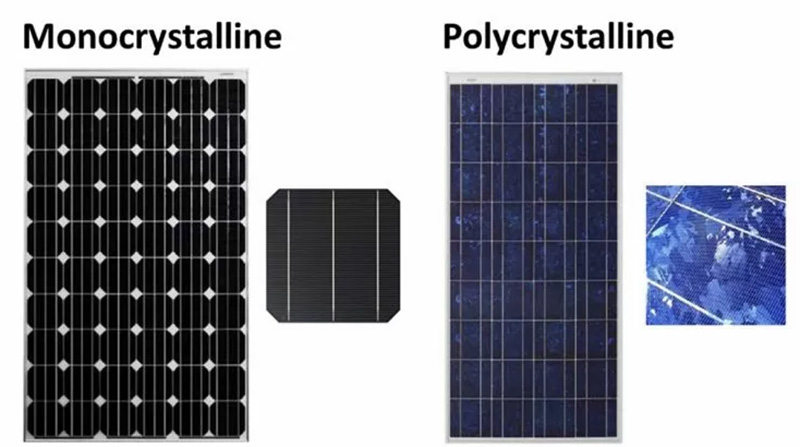
Manufacturing Process
Understanding the production methods of solar panels is key to appreciating the nuances between different types. Let's dive into the manufacturing processes of monocrystalline and polycrystalline solar panels to get a clearer picture.
How Monocrystalline Panels are Made
Monocrystalline panels, often referred to as "single-crystal panels," start with the production of monocrystalline silicon, which forms the essential basis for these high-efficiency panels.
- Silicon Production: Silicon is extracted from sand and transformed into pure silicon through a process that involves heating with carbon in an electric arc furnace. This produces metallurgical-grade silicon.
- Czochralski Process: The pure silicon then undergoes the Czochralski process. In this method, a seed crystal of silicon is dipped into molten silicon and slowly withdrawn, forming a cylindrical-shaped ingot of single-crystal silicon.
- Slicing: This ingot is then finely sliced into wafers using a sawing process. These wafers become the base of the solar cells.
- Cell Production: The wafers undergo doping processes, anti-reflective coating application, and the addition of electrical contacts to transform them into functional solar cells.
- Panel Assembly: The individual cells are then connected in series or parallel arrays and encapsulated between protective materials to create the final solar panel.
How Polycrystalline Panels are Made
Polycrystalline panels, sometimes known as "multi-crystal panels," have a somewhat different manufacturing route due to their varied crystal structure.
- Silicon Production: Just like with monocrystalline, the process begins with the extraction of silicon from sand. The resulting metallurgical-grade silicon is then purified.
- Silicon Casting: Instead of the Czochralski process, the silicon here is melted and poured into a square mold. As the silicon cools, multiple crystals form in a random pattern, giving polycrystalline its distinctive mosaic appearance.
- Slicing: The cooled block of silicon is then sliced into square-shaped wafers. These wafers serve as the base for the solar cells.
- Cell Production: Similar to monocrystalline, these wafers undergo doping, anti-reflective coating application, and electrical contact addition to create functional solar cells.
- Panel Assembly: The individual polycrystalline cells are connected and encapsulated to form the finished solar panel.
It's crucial to note that while the processes differ, both types of panels aim to maximize efficiency, durability, and longevity. The choice between them often hinges on specific project requirements, budget, and aesthetic preferences.
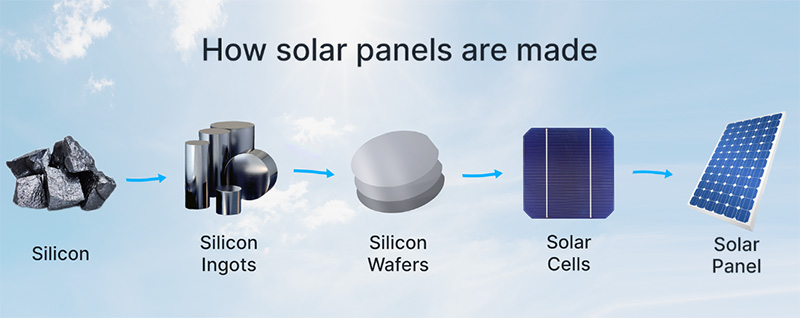
Cost Factors
In the realm of solar panels, understanding the costs is as vital as knowing their efficiency. These costs can be classified under various categories, from production to maintenance. Here's an exploration into the cost factors associated with monocrystalline and polycrystalline solar panels.
Initial Production Costs
The beginning of a solar panel's life cycle includes production-related expenses. Two significant factors influence these costs:
Raw Materials
For both monocrystalline and polycrystalline solar panels, the primary raw material is silicon. The price of silicon can fluctuate based on global demand, availability, and extraction methods.
- Monocrystalline: Given that it requires high-purity silicon, the costs can sometimes be higher, especially when there's a surge in demand for pure silicon.
- Polycrystalline: While also silicon-based, the purity level required is less stringent, potentially making the raw materials slightly less expensive.
You can delve deeper into the dynamics of
silicon pricing to gain a better understanding of its market trends.
Manufacturing Techniques
The methods used to produce solar panels can influence the initial costs significantly.
- Monocrystalline: The Czochralski process, being intricate and energy-intensive, can add to the production costs of monocrystalline panels.
- Polycrystalline: The casting method for polycrystalline silicon is relatively simpler and might be more cost-effective in terms of energy consumption and production speed.
Installation Costs
Once produced, the panels need to be installed. Installation costs can vary based on:
- Location: Installing panels in remote or inaccessible locations can escalate costs.
- Labor: Regions with higher labor costs will naturally see a surge in installation expenses.
- Mounting Systems: Advanced or specialized mounting systems can add to the cost.
- Scale: Larger installations, like solar farms, may benefit from economies of scale, potentially reducing per-panel installation costs.
Maintenance and Lifespan Costs
Over time, solar panels require upkeep to ensure they function optimally.
- Cleaning: In areas where dust or snow is prevalent, regular cleaning might be necessary, adding to maintenance costs.
- Repairs: Panels can get damaged due to extreme weather conditions or other external factors. Repairing or replacing these panels can add to the long-term costs.
- Efficiency Degradation: Monocrystalline panels often degrade at a rate of about 0.3% to 0.5% per year, while polycrystalline panels might degrade at around 0.4% to 0.7% annually. This means that over two decades, the efficiency drop could impact energy yields and potential returns on investment.
For those looking to gain deeper insights into the lifecycle of solar panels, understanding the concept of
solar panel degradation can be invaluable.
In conclusion, when considering the adoption of solar energy, it's crucial to weigh all associated costs, not just the initial price tag. Making an informed decision requires a holistic understanding of the entire solar panel lifecycle.
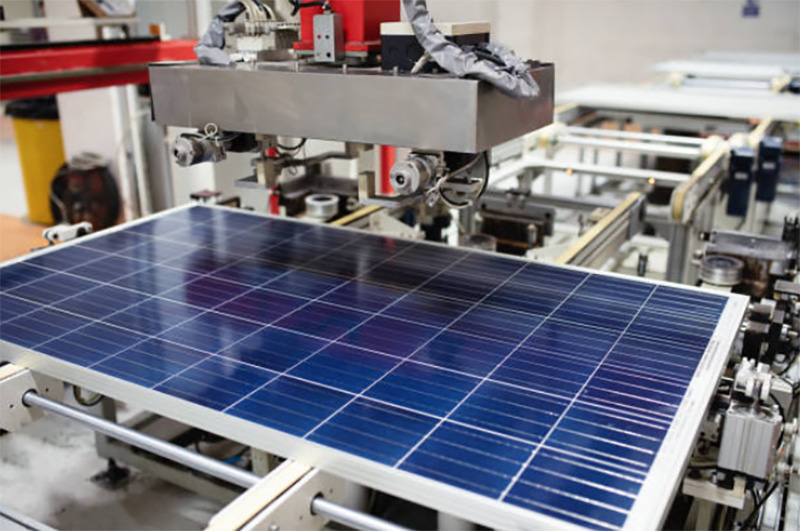
Performance and Efficiency
Solar panels are a long-term investment, and their performance and efficiency over time are crucial considerations for users. Let's dive into the distinguishing factors between monocrystalline and polycrystalline solar panels in this context.
Conversion Efficiency Rates
Conversion efficiency is a measure of how effectively a solar panel can convert sunlight into usable electricity.
- Monocrystalline: Due to the uniform crystal structure, monocrystalline panels generally have higher conversion efficiencies, typically ranging between 18% to 22%. This higher efficiency rate is because of fewer grain boundaries, allowing for more straightforward electron movement.
- Polycrystalline: These panels usually have conversion efficiencies between 15% to 18%. The multiple crystal structures create more boundaries, which can result in minor electron losses and slightly reduced efficiency.
For a deeper dive into the science behind solar energy conversion,
photovoltaic effect offers comprehensive insights.
Performance in Varied Climates
Solar panels' performance can vary based on the climatic conditions they're exposed to.
- Monocrystalline: They tend to perform slightly better in warmer temperatures due to their single crystal structure, which has a lower temperature coefficient.
- Polycrystalline: While these panels perform optimally in cooler conditions, they might lose a bit more efficiency than monocrystalline panels in higher temperatures.
Both types, however, benefit significantly from sunny conditions. In cloudy or shaded environments, their performance can drop. Panels installed in areas with frequent cloud cover or shade might benefit from micro-inverters or power optimizers to boost efficiency.
Degradation Over Time
Like all materials exposed to the elements, solar panels degrade over time, affecting their efficiency.
- Monocrystalline: These panels have a slight edge in terms of longevity, degrading at a rate of about 0.3% to 0.5% annually. Thus, after 25 years, one might expect them to retain about 87% to 90% of their original efficiency.
- Polycrystalline: Their degradation rate ranges between 0.4% to 0.7% per year. After a quarter of a century, they might retain around 84% to 88% of their initial efficiency.
The rate of degradation can also be influenced by external factors like extreme weather conditions, potential manufacturing defects, or inadequate installation. For those interested in the specifics of degradation factors, the study of
solar panel degradation is a valuable resource.
In summary, while both monocrystalline and polycrystalline panels have their strengths and potential drawbacks, understanding their performance and efficiency intricacies ensures informed decision-making for potential adopters of solar energy.
Environmental Impact
While solar panels are heralded for their green credentials in providing renewable energy, it's essential to evaluate their entire life cycle to truly understand their environmental impact. This analysis will delve into the carbon footprint associated with production, waste management considerations, and the implications of large-scale solar farms on land and biodiversity.
Carbon Footprint of Production
Every manufacturing process has associated emissions, and solar panels are no exception.
- Monocrystalline: The production of these panels, especially during the Czochralski process, is energy-intensive. This can lead to higher greenhouse gas emissions, especially if the energy used in manufacturing is sourced from fossil fuels.
- Polycrystalline: While the casting method used for polycrystalline panels might be slightly less energy-consuming than its monocrystalline counterpart, it still has associated carbon emissions. The exact footprint depends on the energy mix of the manufacturing location.
However, it's vital to note that once installed, solar panels offset their carbon footprint many times over during their lifespan by generating clean energy. More insights into the carbon dynamics can be explored through
life cycle assessment studies.
Waste Management and Recycling
End-of-life management for solar panels is crucial for minimizing environmental impact.
- Monocrystalline and Polycrystalline: Both types of panels contain valuable materials like silicon, metals, and glass. These can be recovered and reused through recycling processes. While recycling infrastructure is growing, it's not yet widespread. This is a challenge the industry is actively addressing, ensuring that decommissioned panels don't end up in landfills.
Organizations and industries are working on streamlining the recycling processes, and understanding the
solar panel recycling can shed light on current best practices.
Land Use and Biodiversity Impacts
Solar farms, especially utility-scale projects, require significant land areas, which can have implications for local ecosystems.
- Land Transformation: Large-scale solar installations can alter land profiles, potentially impacting local flora and fauna. Proper environmental impact assessments before installation can help in choosing sites with minimal biodiversity disruption.
- Co-Usage: Some solar farms are exploring dual-use, where the land beneath the panels is used for agriculture. This approach, known as agrivoltaics, can optimize land use and support local farming communities.
- Habitat Creation: Interestingly, some solar installations have become unintended habitats for local wildlife. With careful planning, solar farms can be designed to be wildlife-friendly, offering shelter and food sources.
In conclusion, while solar panels are a step towards a more sustainable energy future, it's crucial to evaluate their entire environmental footprint. By being informed and proactive, we can ensure that the transition to renewable energy sources remains genuinely green.





